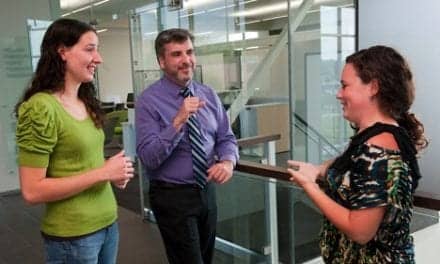According to a recent announcement from the National Institute on Deafness and Other Communication Disorders (NIDCD), a class of low-cost antibiotics called aminoglycosides are commonly used to treat certain types of life-threatening infections, but these medicines are ototoxic and can damage the ear, causing hearing loss, ringing in the ears (tinnitus), or balance disorders.
Results from a new mouse study funded in part by the National Institutes of Health (NIH) show that the widespread or systemic inflammation that accompanies severe infections can worsen an aminoglycoside’s toxic effects on hearing, leading to permanent hearing loss. The study findings are published online as the cover article in the July 29 edition of Science Translational Medicine.
Study results suggest that patients treated with the aminoglycosides class of antibiotics are more likely to develop permanent hearing loss than previously believed. At particular risk for hearing loss associated with aminoglycoside treatment are newborns and premature babies. The authors report that about 80% of 600,000 admissions into neonatal intensive care units in the United States are treated with aminoglycosides each year.
While the ototoxic effects of aminoglycosides are well known, how the drugs reach and impact the inner ear has not been fully understood. A team of researchers led by Peter S. Steyger, PhD, professor of otolaryngology at the Oregon Health and Science University (OHSU) studied the role of systemic inflammation.
The researchers explain that they used a mouse model of systemic infection and inflammation and gave both sick mice and a group of healthy mice an aminoglycoside. They found that, compared to healthy mice, the sick mice take up more of the drug into the cochlea, the inner ear structure that is lined with delicate sensory hair cells that are critical for hearing. In addition, the mice with widespread inflammation had greater hearing loss across a wider range of frequencies than the healthy mice. Much of the loss was permanent, especially at higher frequencies.
By providing a better understanding of the role and mechanism that inflammation plays on the drugs’ ototoxicity, the study opens doors for scientists to develop new aminoglycosides that won’t permanently damage the hair cells of the inner ear.
The authors suggest that protecting hair cells during aminoglycoside therapy, limiting treatment with aminoglycoside antibiotics, or substituting other non-ototoxic antibiotic or anti-infective therapies when possible could help hundreds of thousands of patients preserve their hearing. The OHSU research team and others supported by the NIH’s NIDCD are exploring several ways to protect hair cells from damage caused by aminoglycosides and other drugs.
Source: NIDCD, NIH
Top Photo Caption: Three rows of intact outer hair cells, and one row of inner hair cells, separated by a row of pillar cells.
Photo credits: Oregon Health and Science University; Steyger Lab; Science Translational Medicine






